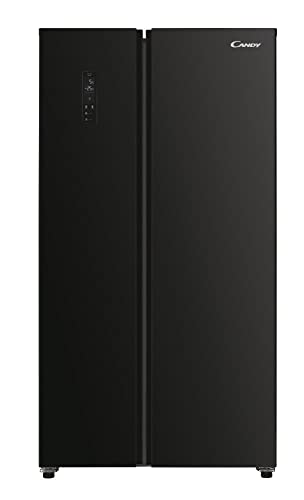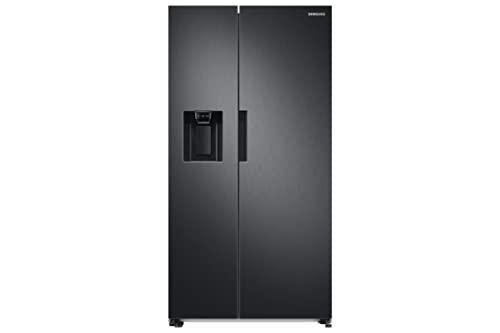The Full Guide To Fridge With Ice Maker
2024.07.25 15:58
 Benefits of a Fridge With an Ice Maker
Benefits of a Fridge With an Ice MakerMany refrigerators include an ice maker that is either built into the door or in the freezer. This makes it easy to enjoy refreshing, cold water. These refrigerators are generally more expensive than other refrigerators, but they can save you the headache of filling and cleaning Ice trays.
To make Ice, the circuit of the ice maker sends the current to a water valve. The water then flows into the mould and then freezes creating cubes.
Convenience
One of the primary advantages of a fridge equipped with an ice maker is that it will save your time. The ice maker will fill the trays automatically, saving you time. It is usually activated by a sensor which detects the level of water in the freezer, and once it reaches the appropriate temperature, the ice-making process begins. A valve opens and a cooling system directs water into molds for ice. A built-in thermometer measures the ice to verify that it is completely frozen and when that happens, the valve shuts off and the ice is transferred from the molds to the storage bin.
It is also useful if you entertain guests. This means that you will always have an ample supply of ice and can save yourself from the embarrassing moment when guests request more, only to find that you are out. You can even find fridges equipped with an ice maker. They come with a dispenser in the door, making it simple to get water in and serve without opening the refrigerator.
Fridges with ice makers are also more energy-efficient than conventional models. The ice-making system uses very little electricity to run, and since they are typically used for long periods of time, this can result in a significant reduction of your energy bills.
If you're looking to cut your expenses even more you can choose an appliance that does not use a cooling tower. These "direct cool" refrigerators come with an ice maker. They make use of the same refrigerant to make ice that they do to cool your fridge. These units are more efficient than conventional ice makers and can reduce your energy usage by as much as 25%. This can help you save money on utility bills and reduce your carbon footprint.
Efficiency
With an ice maker, you can save time by not needing to fill and freeze ice cubes. Additionally, these devices provide an ongoing supply of fresh ice available for you to pour from the refrigerator or pour into your cup whenever you need. These devices are more practical than refrigerators that demand you go into the freezer to get bags of frozen ice.
The majority of refrigerators with ice makers come as combination models that have an ice maker inside the freezer compartment as well as the traditional fridge compartment. There are also standalone fridge/freezers that have the Ice maker built into the door or at the back of the freezer.
Typically, the ice maker on your refrigerator is powered by the main water supply line. To begin the process the timed switch within the circuit sends a brief amount of current down electrical wires to a water valve. The valve opens which allows water to flow into the molds. The built-in thermometer will signal the timed-switch that indicates when the ice-making process is completed. This means that the ice is sufficiently chilled to stop the water from entering the molds. A motor spins a shaft that includes arms that move the ice into the bins for ice.
Some ice machines permit you to select from two types of ice: standard ice cubes and crushed ice. This is a great option for hot weather, if you're looking to reduce the time it takes to cool your drink down.
If your ice machine isn't producing ice, or the produced ice is squishy and uneven, it could be because your freezer has been set too low. Check your owner's manual to find the manufacturer-recommended temperature and try setting it higher.
If your ice maker isn't making ice, or producing very little it could be due to the water fill tubes are blocked. These tubes are crucial in order for the ice-making machine perform effectively. They get their water from the home's main water supply. These tubes can become blocked as time passes due to mineral deposits, depending on the quality of the water in your home. It is possible to clear them up with the pipe cleaner or running the water line in your refrigerator through a filter in order to remove minerals.
Water Dispenser
Refrigerators with ice makers include water dispensers that allow you to access chilled, filtered water without opening the refrigerator's door. Certain models let you add carbon dioxide for sparkling water, or pour hot water to make instant tea, coffee and more. These models are generally more expensive than refrigerators that do not have ice makers, and require a separate connection for the water that melts into Ice.
In the 1980s, refrigerators began offering ice and drinking water dispensers. These were basic automatic ice makers that made one block of ice every day. Nearly half of all refrigerators have an ice maker and a water dispenser built in.
The dispenser works by pulling cold water from the refrigerator's internal plumbing and transferring it to a tiny water filter that removes particles and other basic contaminants. The water is then transferred to an ice mould, which transforms it into one, solid block of ice. The ice is stored in a bin for collection until it is ready to be dispensed.
When you want to drink a glass of water, a timed switch within the circuit of your refrigerator briefly sends current down a pair of electrical wires that are connected to the dispenser. This current causes the solenoid to activate that opens the valve for water and lets in just enough water for an Ice mold. The ice mold is usually a plastic well with many cavities. The valve is closed when the ice has been created. This allows the ice to fall from the mold and fall into the bin in the bin, where they wait to be dispensing.
A little troubleshooting is able to solve most problems with refrigerator water dispensers or ice makers. For more in-depth information, check out our Fridge Dispenser Troubleshooting article to discover the most frequently occurring problems and the best way to fix them.
You can also find an alternative to refrigerator water and ice dispensers by using traditional ice cube tray that you can fill up at your kitchen sink. These tray can hold up to 25 cups of ice and offer more flexibility to control the amount of ice you'd like at any given time.
Cost
The convenience of having an ice maker inside your fridge comes with a cost. cheap fridges Uk with ice makers typically cost more than those without them because they must be professionally installed and connected to a water line, and may require additional repairs or maintenance. In addition, refrigerators that have ice makers are more likely to consume more energy than those that don't have them.
Most refrigerators and freezers that have an ice maker allow you to make traditional ice as well as crushed ice. Many also have a selection of shapes and sizes to pick from so that you can design the ice you make according to your preferences.
It's normal for people to get used to a certain kind of ice, only to be disappointed when they are unable to find it at the supermarket or in a restaurant. If you own a refrigerator equipped with an ice maker you can avoid this problem by setting up your refrigerator to produce your preferred type of ice on a regular basis.
If you drink regularly or host large fridge freezer uk gatherings it can be a hassle to run out of ice. Whether you're sitting alone after a workout, chatting with your spouse after a long day or entertaining your family and friends at your home, you deserve to be able to drink any time you want.
It's a great feeling to know that you will always have ice available for any occasion. But if something goes wrong with the appliance, you'll likely need to hire an appliance repair pro to repair it.
The average cost of a refrigerator or standalone ice maker repair depends on the issue, model and the appliance. Here are some of the most frequently encountered issues:
If your refrigerator's ice maker isn't working it could be due to a blocked tube or faulty valve. These components are electrically powered that can be damaged over time, so hiring a professional to repair them will cost you between $150 and $200.

